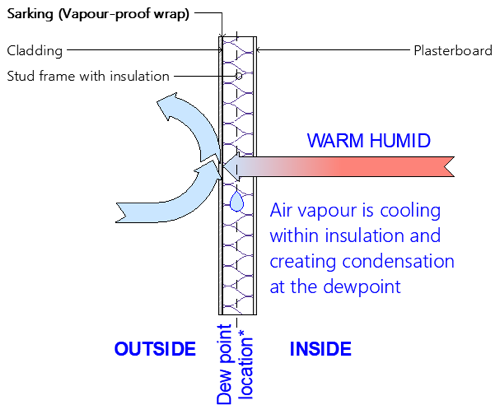Resources

37. Construction - Healthy House - The Flaw of Typical Wall Construction
If you are experiencing a mould problem in your home our building designers in Newcastle explain why this may be occuring.
Because air pressure is higher indoors than the low pressure outdoors, there is a constant suction of air from the inside of your house to the outside. The air is pulled through draughts and gaps, but also through the porous paint and plasterboard and into your walls.

Fig. 2.1.2.1 Typical Australian Wall Construction
Fig. 2.1.2.1 Shows this warm humid air being sucked through the wall lining into the insulation. This warm air travels in and around your insulation until it meets the dew point, condensing into liquid water.
You will notice the arrow showing the warm air in Fig. 2.1.2.1 stops at the membrane labelled “sarking”. Sarking on your wall helps keep your insulation in place, but primarily is used to keep your walls externally watertight. It is illegal in many countries because of the health issues it creates since it is not vapour-permeable, meaning gas water (vapour) cannot get through it. This means that condensation in your wall has nowhere to evaporate to, being trapped between air pressure pushing on one side and non-vapour permeable sarking on the other.
The condensation within the walls allows the prevalence of mould and mildew to grow. Mould spores can travel through the plasterboard and become airborne with no visible evidence to the occupants.